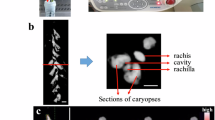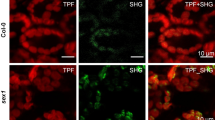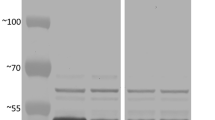Abstract
ARTHUR MEYER firmly believed that the layering of starch granules corresponded to the alternation of day and night, and this belief is still shared by the authors of modern text-books. If this were true, then layers should disappear when starch granules develop under constant outer conditions of illumination, temperature and moisture. The only positive result of such an experiment was reported by van de Sande-Bakhuyzen for wheat. All other results appear to be negative. Salter found layers when starch granules grew in darkness, Fischer observed them after constant illumination, and according to Küster more than two layers could be deposited during one day.
This is a preview of subscription content, access via your institution
Access options
Subscribe to this journal
Receive 51 print issues and online access
$199.00 per year
only $3.90 per issue
Buy this article
- Purchase on SpringerLink
- Instant access to full article PDF
Prices may be subject to local taxes which are calculated during checkout
Similar content being viewed by others
References
Bünning, E., and Hess, C., Naturwiss., 41, 339 (1954).
Shaw, M., Can. J. Bot., 32, 523 (1954).
Porter, H. K., J. Exp. Bot., 4, 44 (1953).
Waygood, E. R., Can. J. Res., 26, 461 (1948).
Weier, T. E., and Stocking, C. R., Bot. Rev., 13, 14 (1952).
Ewart, M. H., Siminovitsch, D., and Briggs, D. R., Plant Physiol., 29, 407 (1954).
Author information
Authors and Affiliations
Rights and permissions
About this article
Cite this article
BADENHUIZEN, N., MALKIN, M. Phosphorylase Activity in Relation to the Layering of Starch Granules. Nature 175, 1134 (1955). https://doi.org/10.1038/1751134a0
Issue date:
DOI: https://doi.org/10.1038/1751134a0



